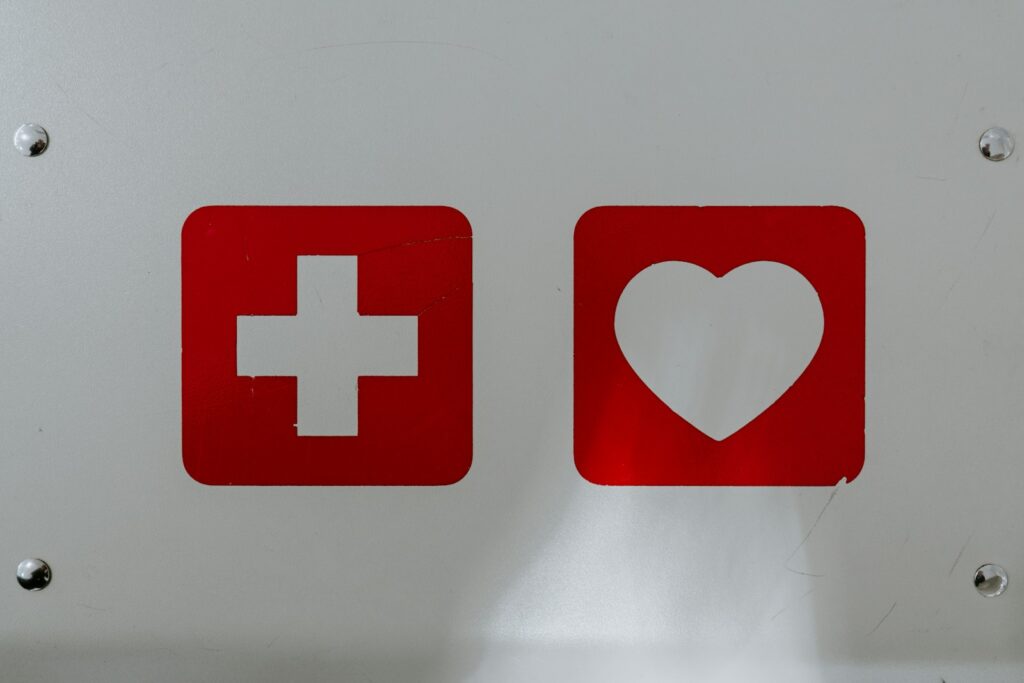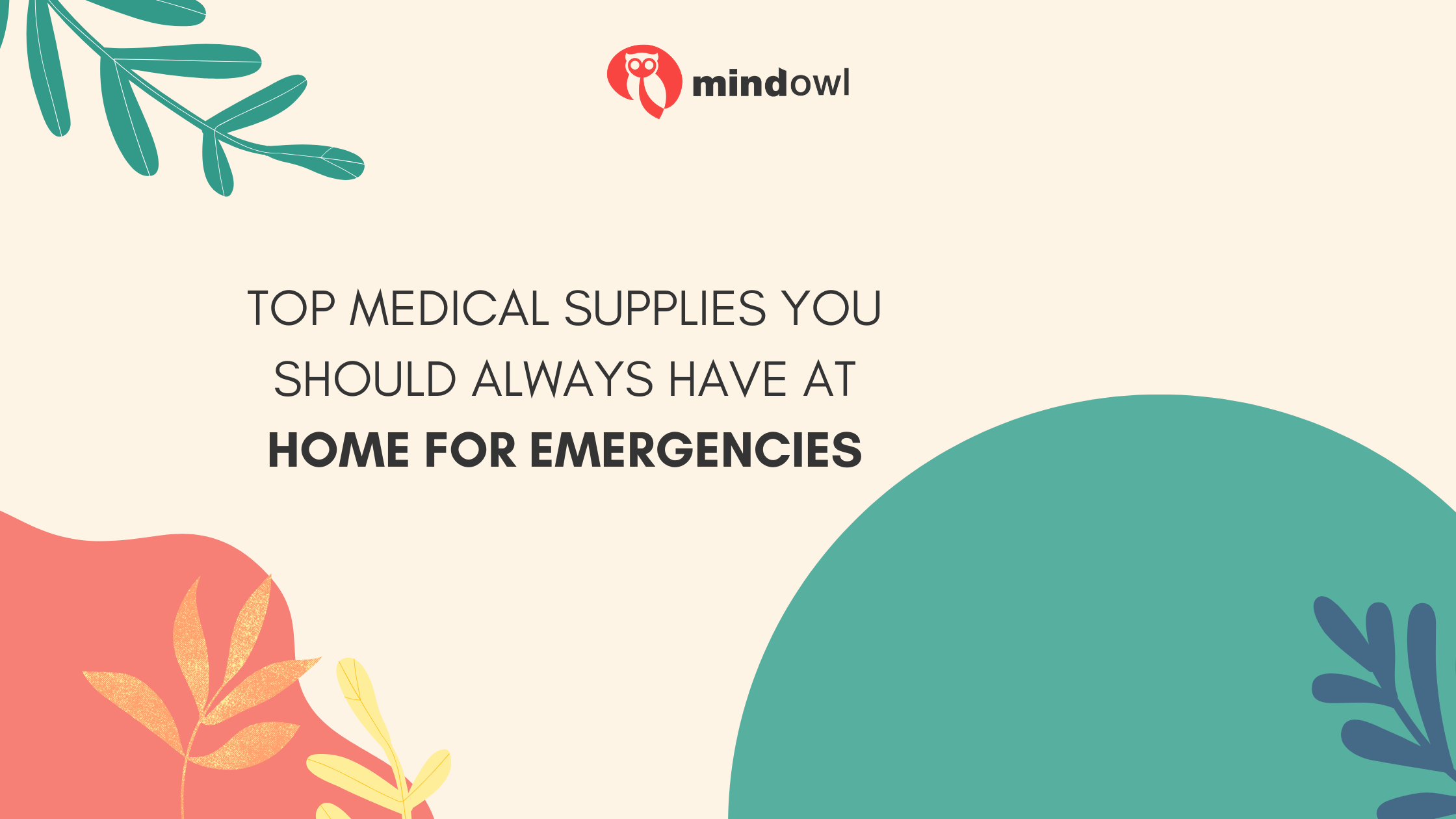Emergencies often strike without warning and may leave individuals scrambling for necessary medical supplies if they’re not already prepared.
Keeping a first-aid kit can be very helpful and even life-saving. No matter where you are, whether at home, in the car, or on a hike, you should ensure readiness for minor or more serious incidents that could occur anywhere and be prepared to treat unexpected bruises or sickness. This guide outlines crucial supplies everyone should consider having on hand.
Basic First Aid Kit
Every household should include a well-equipped first aid kit. Such a kit typically contains adhesive bandages, sterile gauze, and antiseptic wipes, among other basics. These items effectively address minor cuts, scrapes, and burns. Adding a pair of scissors and tweezers makes it easier to handle the items in the kit. Additionally, receiving proper first aid training can equip you with the skills needed to respond effectively in an emergency.

Pain Relief and Fever Management
Pain relievers and fever reducers are indispensable in any emergency supply. Medications such as ibuprofen or acetaminophen offer relief for discomfort and fever.
Stocking both adult and children’s formulations ensures that appropriate doses are available for all family members. It is also a good idea to check the expiration dates of all medicines to ensure they can still be used.
Wound Care Essentials
Proper wound management is a key factor in preventing complications and ensuring faster healing. It requires that you have the proper supplies, including antiseptic solution, gauze pads, and adhesive tape. You must also have a variety of bandage sizes to treat different wound types.
You should always have a bottle of saline solution in your first-aid kit for cleaning injuries thoroughly so they don’t turn septic.
Thermometers
Accurate temperature readings are necessary, especially when assessing illness at home. While some people still prefer oral thermometers, digital thermometers can provide quick and precise results, which is essential for both adults and children.
When you buy a digital thermometer, go for the type designed for ear or forehead use. This can be especially helpful when taking the temperature of younger family members who may not be comfortable with traditional oral/underarm thermometers.
Allergy and Asthma Supplies
When allergies or asthma arise, appropriate intervention can prevent an escalation in symptoms. Stocking antihistamines and decongestants helps prepare the household for allergic reactions.
For those with asthma, an extra inhaler ensures readiness if symptoms arise unexpectedly. Make sure that these supplies are not expired, or they won’t be very effective.
Gloves and Masks
Protective gloves and masks serve multiple purposes during emergencies. Latex or nitrile gloves help maintain hygiene while treating injuries.
Masks, particularly useful during respiratory illness outbreaks, protect both the caregiver and the patient. Having a sufficient supply of these items adds an extra layer of safety.
Emergency Contact Information
While not a physical supply, maintaining updated emergency contact information proves invaluable. The contact information of a person you can get in touch with quickly in an emergency could save lives. Keep this information up-to-date and readily available, and not just on your phone. A contact card with the information on it can be a good alternative.
A list of family doctors, nearby hospitals, and emergency services should be easily accessible. Including allergy and medication details for each family member aids responders in providing appropriate care.
Over-the-Counter Medications
Beyond pain relievers, other over-the-counter options address various common ailments. Antacids, for example, can relieve heartburn, while anti-diarrheal medications manage digestive issues.
Antihistamines for mild allergic reactions and cold symptom relief also prove beneficial. Keeping a diverse selection of medications ensures readiness for different scenarios.
Splints and Slings
In the event of sprains or fractures, splints and slings help immobilize injured limbs. These items can alleviate pain and prevent further damage until professional medical attention is available. Learning basic application techniques for these supplies enhances their effectiveness during critical moments.
Hydration and Nutrition Supplies
Emergencies may disrupt regular access to food and water, making hydration and nutrition supplies essential. Oral rehydration solutions counteract dehydration from illness or heat.
Non-perishable food items, such as energy bars, ensure sustenance when normal meals are unavailable. Storing enough for each family member provides peace of mind during extended emergencies.
Burn Treatment Supplies
Burns, whether minor or more severe, require immediate attention. Stocking burn ointments and dressings ensures quick treatment and prevents infection. Aloe vera gel can also provide soothing relief for superficial burns. Understanding the correct application of these treatments enhances their efficacy.
Emergency Blanket and Cold Pack
You may encounter unexpected situations where maintaining body temperature is crucial. Emergency blankets, often made from reflective materials, help retain body heat in cold conditions. These are compact and lightweight and can significantly prevent hypothermia.
Plus, cold packs provide relief from swelling and pain, which is especially useful for sprains or bruises. Instant cold packs, activated by squeezing, require no refrigeration, making them ideal for emergency kits.
Flashlight and Batteries
Power outages often accompany emergencies, making reliable lighting essential. A sturdy flashlight ensures visibility in dark conditions, aiding in safe navigation and treatment. Stocking extra batteries or opting for a rechargeable flashlight guarantees functionality when needed.
Consider including a headlamp for hands-free operation, allowing caregivers to attend to injuries without holding a light source.
Conclusion
Preparation is key to handling unexpected medical situations, whether at home or out and about. By having a well-stocked first-aid kit of essential medical supplies, you can safeguard health and well-being during emergencies. When you and others around you are at your most vulnerable, you can rely on emergency first aid. It’s all about being ready, no matter how small or big the emergency is. If you haven’t already assembled a kit, start by shopping these medical supplies on sale.
MindOwl Founder – My own struggles in life have led me to this path of understanding the human condition. I graduated with a bachelor’s degree in philosophy before completing a master’s degree in psychology at Regent’s University London. I then completed a postgraduate diploma in philosophical counselling before being trained in ACT (Acceptance and commitment therapy).
I’ve spent the last eight years studying the encounter of meditative practices with modern psychology.

